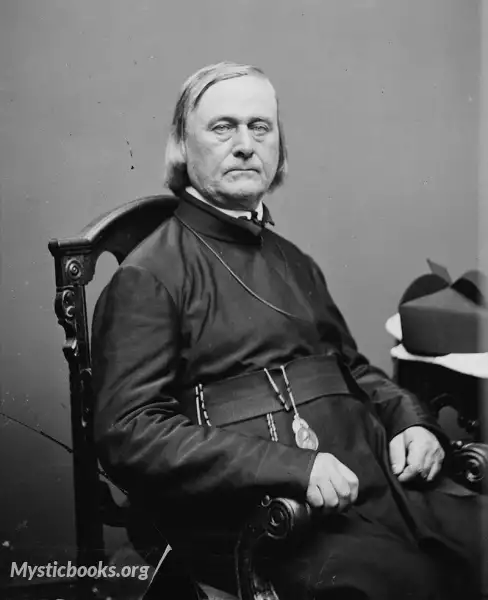
Timeline
Title
Country/Nationality
Fr. Pierre-Jean De Smet
Pierre-Jean De Smet also known as Pieter-Jan De Smet, was a Flemish Catholic priest and member of the Society of Jesus (Jesuits). He is known primarily for his widespread missionary work in the mid-19th century among the Native American peoples, in the midwestern and northwestern United States and western Canada.
His extensive travels as a missionary were said to total 180,000 miles (290,000 km). He was affectionately known as "Friend of Sitting Bull", as he persuaded the Sioux war chief to participate in negotiations with the American government for the 1868 Treaty of Fort Laramie.
De Smet was born in Dendermonde, in what is now Belgium in 1801, and entered the Petit Séminaire at Mechelen at the age of nineteen. De Smet first came to the United States with eleven other Belgian Jesuits in 1821, intending to become a missionary to Native Americans. He began his novitiate at White Marsh, a Jesuit estate near Baltimore, Maryland. Part of the complex survives today as Sacred Heart Church in Bowie.
In 1823, De Smet was transferred to Florissant, Missouri, just north of St. Louis, to complete his theological studies and to begin his studies of Native American languages. He was ordained a priest on 23 September 1827.
De Smet and five other Belgian novices, led by Charles Van Quickenborne, moved to Florissant, Missouri, north of St. Louis, at the invitation of bishop Dubourg. They founded several academic institutions, among which was the St. Regis Seminary, where De Smet had his first contacts with indigenous students. He learned about various Indian tribal customs and languages while serving as a prefect at the seminary.
Around 1830, De Smet went to St. Louis to serve as treasurer at the College of St. Louis. On 23 Sept. 1833, De Smet became an American citizen. He returned to Flanders that same year due to health problems and did not return to St. Louis until 1837.
In 1854, De Smet helped establish the mission in St. Ignatius, Montana. It is located on the Flathead Indian Reservation. The current building was added to the National Register of Historic Places 100 years after his death. In his remaining years, De Smet was active in work related to the missions which he helped establish and fund. During his career, he sailed back to Europe eight times to raise money for the missions among supporters there. In 1868 he persuaded Sitting Bull to send a delegation to meet the U.S. peace commissioners, leading to the Treaty of Fort Laramie. De Smet returned to St. Louis and from there made several trips to the north country helping Indians and teaching Christianity. In 1850 he cruised from St. Louis to the Dakota territory aboard the steamboat Saint Agne, piloted by Joseph LaBarge. LaBarge was a close friend of De Smet, and always offered the services of his steamboat to the Catholic missionary effort. De Smet died in St. Louis on 23 May 1873. He was originally buried at St. Stanislaus Seminary near Florissant, as were some fellow early Jesuit explorers. In 2003, the remains in that cemetery were moved to Calvary Cemetery in St. Louis, at the newer burial site for Jesuits of the Missouri Province.
Books by Fr. Pierre-Jean De Smet

De Smet's Letters and Sketches, 1841-1842
In 1841 and 1842, Fr. Pierre-Jean DeSmet traversed the wide and wild American West to bring the gospel to the Flatheads, who had sent multiple delegations from Montana to St. Louis, repeatedly requesting a Blackgown priest to instruct them in Christi...